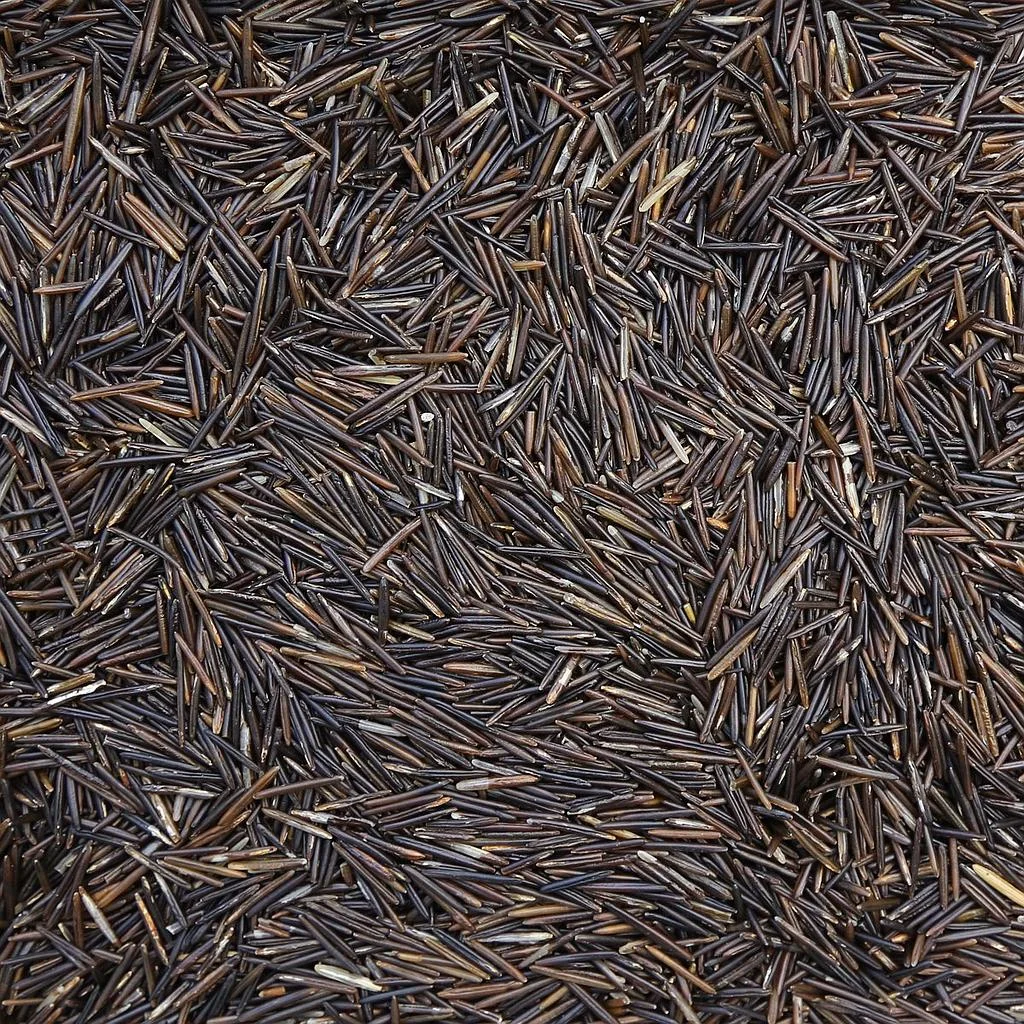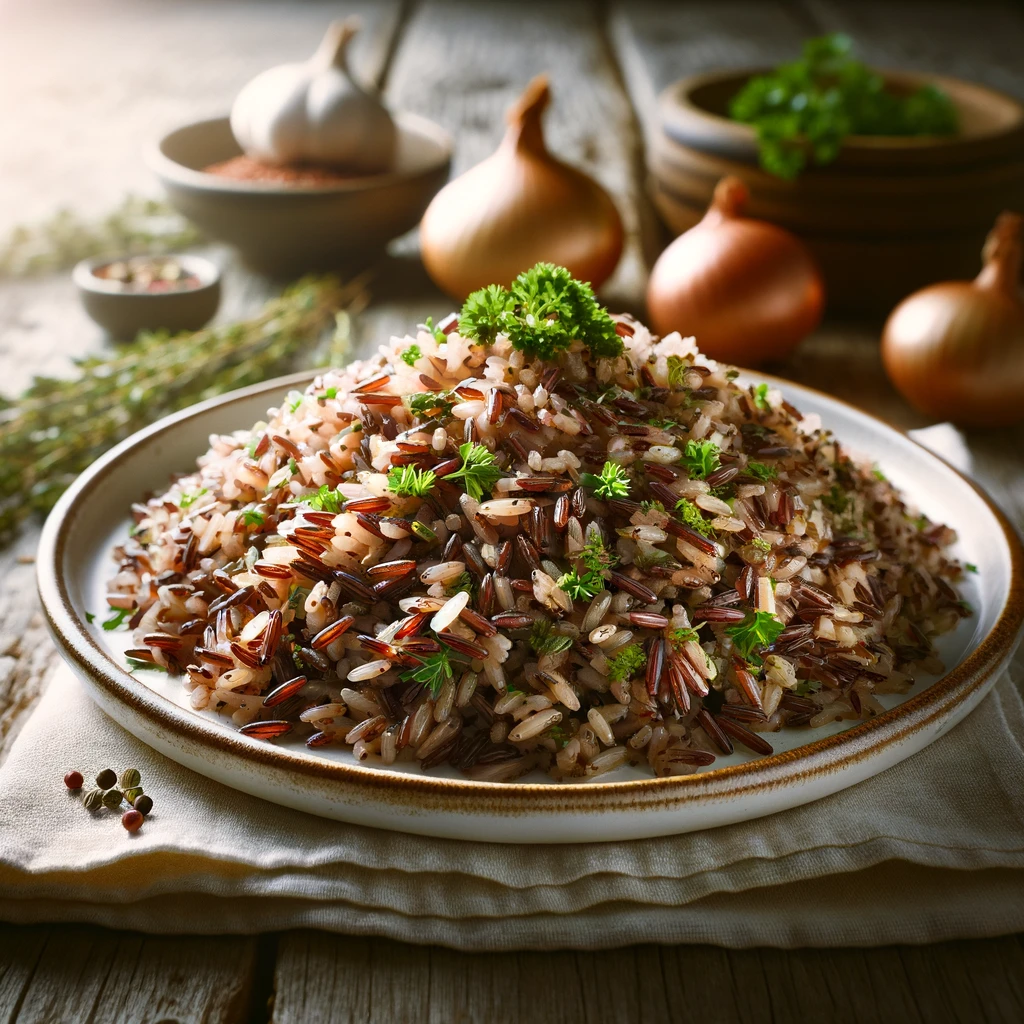What is Wild Rice?
Wild rice is NOT rice! Wild rice is a semi-aquatic marsh grass ancient grain that naturally grows in North America’s Great Lakes Region. Often referred to as the “caviar of grains”. One of the few grains indigenous to North America. A naturally gluten-free, high fibre, and nutrient-rich whole grain. Harvest season lasts for four to five weeks in late August or early September.
A Brief History of Manoomin
Known to the Anishinaabeg as manoomin, (pronounced ma-no-min) meaning the “good berry”, it became a spiritual and cultural staple as well as a culinary one. According to oral tradition, the Anishinaabeg Peoples, also known as Ojibwe or Chippewa, followed a shell in the sky thousands of years ago to find a place where the food grows on water. Their journey led them from the east coast of North America to the Great Lakes Region of the United States and Canada.
Manoomin = Healthy Wetlands
Referred to as “a floating prairie”, manoomin is integral to marshland biodiversity. Protects and restores wetlands and watersheds. Improves water quality. Provides habitat and shelter for wildlife from insects, fish, moose, and migratory birds. Fixes nutrients and sequesters carbon and methane. Binds soils which increases shoreline integrity, reduces erosion, and is a natural barrier during every increasing severe weather event.
Manoomin & ESG “I”
Environment: Manoomin starts the conversation on healthy natural environments (especially marshlands and watersheds – the earth’s liver & kidneys).
Social: Manoomin starts the conversation around dynamic and multifaceted social, legal, community issues, and corporate culture.
Governance: Manoomin starts the conversation around corporate governance policies and direction as it relates to complex systems (i.e. social, environmental, economic).
Indigenous: Manoomin starts the conversation around the Indigenous concept of a spiritually-based cyclical gift economy. This mindset s upports Indigenous cultures, language, worldview, and efforts towards authentic reconciliation and engagement.
Health Benefits of Manoomin
- Excellent source of plant-based protein.
- Low glycemic index of 57.
- Contains all 9 essential amino acids.
- High source of fibre.
- Naturally reduces inflammation.
- Supplies a number of important nutrients including phosphorus, magnesium, and zinc.
- 3.5-ounce (100-gram) serving of cooked wild rice.
- 101 Calories, 4G Protein, 0.3G Fat, 21.3G Carbs, 1.8G Fiber, 0.7G Sugar, 3MG Sodium
- 82MG Phosphorus, 32MG Magnesium, 1.34MG Zinc
Manoomin on your plate & in your cup
BREAKFAST
Substitute wild rice in place of oatmeal.
Combined with yogurt, fruit and nuts.
Granola, breakfast bars.
LUNCH
Make salads more filling with the nutritious, nutty flavour of wild rice.
DINNER
Harvest Bowls. Wild rice and the Three Sisters* vegetables (corn, beans, and squash).
*The Three Sisters planting is an Indigenous agricultural tradition. Corn is planted on small hills with beans around them and interspersed with squash. The trio nurture each other like family.
DESSERT
A gluten-free, vegan friendly ingredient for those with special dietary needs.
In rice pudding, swap out the white rice and use wild rice for a unique twist on a classic dish.
BEVERAGE
Wild Rice Teas (Hot or Iced)
ManoominCha™ green tea + roasted wild rice
Manoominaaboo™ roasted wild rice herbal tea
ManoominChai™ black tea + masala spice + roasted wild rice
Food for Thought
A veritsile whole grain substitute for potatoes, pasta, and conventional rice. Pairs well with most foods and cuisines. Added to dishes such as salads, soups, and casseroles to deliver a nutty, earthy flavour. Ground into flour to make gluten-free breads, pastries and pancakes. Satisfy the menu diversity mix with an ingredient that is exotic, yet familiar to a global audience. Impressively long shelf-life of 10+ years.


